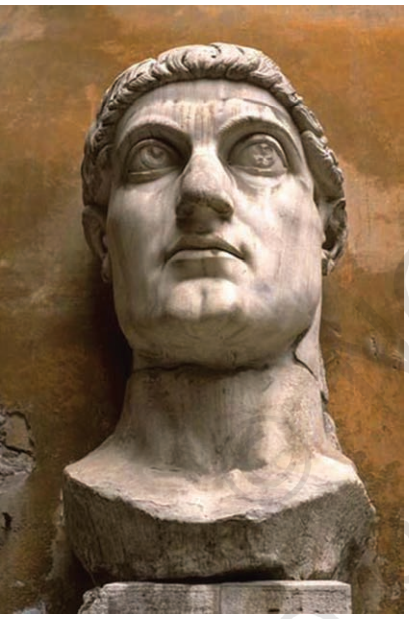An Empire Across Three Continents – Complete Guide For Class 11 History Chapter 2
Welcome to iPrep, your Learning Super App. Our learning resources for the chapter “An Empire Across Three Continents” in History for Class 11th are designed to ensure that you grasp this concept with clarity and perfection. Whether you’re studying for an upcoming exam or strengthening your concepts, our engaging animated videos, practice questions, and notes offer the best of integrated learning with interesting explanations and examples.
Objectives Of Learning An Empire Across Three Continents
This chapter explores the vast and influential Roman Empire, which spanned across Europe, Asia, and Africa. It delves into the empire’s early expansion, the governance structure under the Principate, the challenges of the third-century crisis, and the cultural, social, and economic aspects that shaped the lives of its people. The chapter also highlights the empire’s decline and the legacy it left behind.
The Roman Empire, one of the most significant empires in world history, extended across three continents: Europe, Asia, and Africa. This chapter, “An Empire Across Three Continents,” provides an in-depth look into the empire’s early years, its governance structure, social hierarchies, economic expansion, and eventual decline. The chapter also examines the role of gender, literacy, and culture in the empire, providing a comprehensive understanding of life during this period. Through this exploration, we gain insights into the complexities of managing such a vast empire and the factors that contributed to its enduring legacy.

Now that we have explored the importance of the chapter, let’s outline the objectives of studying it.
- To understand the early expansion and governance structure of the Roman Empire.
- To explore the challenges faced during the third-century crisis.
- To examine the social hierarchies, gender roles, and cultural aspects of the empire.
- To analyze the economic expansion and methods of controlling workers in the Roman Empire.
- To gain insights into the decline of the empire during late antiquity.
Now let’s explore the various sections of the chapter.
First of all, to understand the expansion and establishment of the Roman Empire, let’s explore the section titled “The Early Empire” of the chapter “An Empire Across Three Continents.”
The Early Empire
- The Roman Empire emerged from the ruins of the Roman Republic.
- Through conquest and diplomacy, Rome expanded its territory to encompass much of Europe and the Mediterranean basin.


Now, to understand the challenges faced by the Roman Empire, let’s delve into the section titled “The Third-Century Crisis” of the chapter “An Empire Across Three Continents.”
The Third-Century Crisis
- The third century was a period of significant turmoil for the Roman Empire.
- Economic instability, military threats, and political instability led to a series of crises.
- The empire eventually recovered, but it was weakened by these challenges.
Now, to understand the social and cultural dynamics, let’s explore the section titled “Gender, Literacy, Culture” of the chapter “An Empire Across Three Continents.”
Gender, Literacy, Culture
Roman society was characterized by distinct gender roles. While men held most positions of power, women enjoyed some degree of legal rights and social status.
- Literacy and Education:
- Literacy was relatively widespread among the Roman elite.
- Education was valued, and many Roman families sent their children to schools.
- Roman Culture:
- Roman culture was influenced by Greek, Etruscan, and other Mediterranean civilizations.
- The Romans were known for their achievements in architecture, engineering, and literature.
Now, to understand the economic growth of the Roman Empire, let’s delve into the section titled “Economic Expansion” in the chapter “An Empire Across Three Continents.”
Economic Expansion
The Roman Empire experienced significant economic expansion during its peak. Trade routes connected the empire to other regions, facilitating the exchange of goods and ideas.
Controlling Workers:
- The Roman economy relied on a large workforce, which included slaves and free laborers.
- The empire implemented various strategies to control and exploit its workforce.

Now, in order to understand the societal structure of the Roman Empire, let’s delve into the section titled “Social Hierarchies” of the chapter “An Empire Across Three Continents.”
Social Hierarchies
- Roman society was hierarchical, with a small elite class holding most of the power and wealth.
- The majority of the population consisted of free citizens and slaves.
Now, to understand the decline of the Roman Empire, let’s explore the section titled “Late Antiquity” of the chapter “An Empire Across Three Continents.”
Late Antiquity
- The late Roman Empire, often referred to as Late Antiquity, witnessed significant changes in society and culture.
- The empire became increasingly Christian, and its political and economic systems transformed.

Finally, as we have gained comprehensive knowledge about the chapter “Writing and City Life”, let’s reflect on the overall learning value of this important lesson.
Overall Learning Value of the Chapter
The chapter “An Empire Across Three Continents” offers a comprehensive overview of the Roman Empire’s vast reach and influence. Through its exploration of early expansion, governance, social hierarchies, and economic activities, the chapter provides valuable insights into the complexities of managing such a large and diverse empire. It also highlights the challenges that led to the empire’s decline, offering lessons on the importance of stability, effective governance, and social cohesion. By understanding the Roman Empire’s history, we gain a deeper appreciation of its legacy and its impact on subsequent civilizations.
Practice questions on Chapter 2 - An Empire Across Three Continents
Get your free Chapter 2 - An Empire Across Three Continents practice quiz of 20+ questions & detailed solutions
Practice Now








